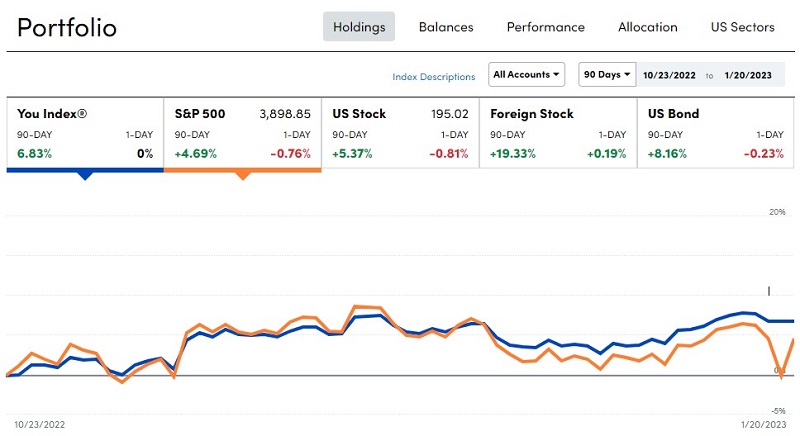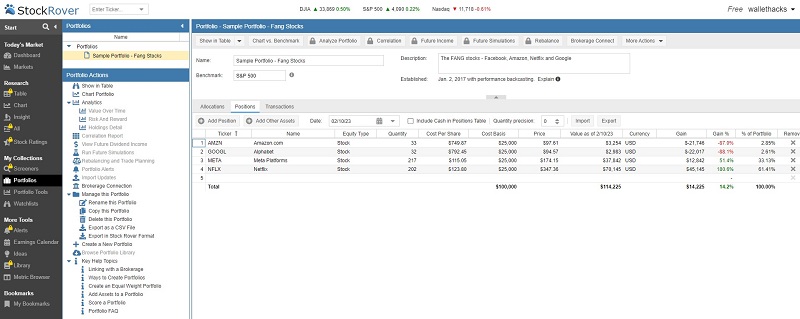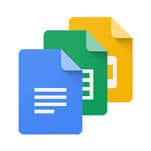When I first started investing, I tried almost every investment portfolio management software out there. I had several brokerage accounts and it was a challenge to see my asset allocation and track my portfolio’s performance in one place.
And back then, the tools were fairly simple.
They used aggregators like Yodlee to scrape your accounts and showed your holdings in a simple dashboard. There was very little analysis of your portfolio because they were really just trying to sell you their wealth management and investment services.
Nowadays, the tools are much better. I don’t analyze my portfolio every day (that’s overkill) but these software packages can give you a quick peek very easily, whenever you want.
You might not be surprised to hear that I get asked all the time – “what is the best investment portfolio management software?”
The answer is the one that meets your needs.
I’ll tell you what I liked about each of them and you can see which is the best one for you.
Table of Contents
Personal Capital
I’ve been using Personal Capital for years and it’s one of my favorite tools. If you want a quick snapshot of your overall finances, this tool gives it to you pretty quickly once you connect all of your data sources. While I would say you shouldn’t be checking your finances every minute of every day (because it’s a waste of time), Personal Capital just makes it so that the waste of time takes a lot less actual time.
Personal Capital is safe, it has an Investment Checkup tool to give you an idea if your investments are on track, and it has a pretty good retirement calculator too based on your data. If you need budgeting, it can track expenses as well but it’s not as good at that as dedicated budgeting tools.

With Personal Capital, you get a lot of features absolutely free. And if you want to speak with a financial advisor, that’s always an option too. It’s not required but having it available is always nice.
Learn more about Personal Capital
StockRover Portfolio Management

StockRover offers the ability to link up your brokerage account and use its powerful analysis tools using your specific brokerage data. You will be able to analyze your portfolio against benchmarks and make key decisions using data, rather than gut feel or guesstimates. If you don’t want to connect your brokerage, you can enter it manually or use a spreadsheet import too. They support thousands of accounts including Vanguard, Charles Schwab, Fidelity, TD Ameritrade, Wells Fargo, E*Trade, Chase, and more.
Once you’ve set it up, you can get daily, weekly, or monthly reports showing performance as well as analyze it for a variety of metrics such as risk adjusted return, volatility, beta, IRR, Sharpe Ratio and more. It’s comprehensive and far more detailed than many others on this list. It really depends on how in-depth you wish to go.
StockRover has a free tier but you get more when you sign up for the paid services.
Ziggma
Ziggma is a portfolio tracking tool that lets you link up your brokerage accounts to analyze your portfolio in one place on a variety of factors. Logging into it for the first time can be a little intimidating, given how much information is available so easily, but over time you get used to it and can find information very quickly.
For example, once you link up your accounts, you can see how diversified you are across five factors (companies, sector, asset class, country, and their “Ziggma Score.” (Ziggma score is their proprietary scoring system)
For dividend investors, there’s even a quick chart on your 12-month forward cash flow and yield.
One factor I haven’t seen anywhere else is a Climate Score and Carbon Footprint for your portfolio. Carbon Footprint is the sum of total annual Scope 1 and 2 carbon emissions of your companies, in metric tons, when that information is available.
That’s just the beginning – you can dig your research with a variety of other screeners, portfolio simulators, back testing tools and more.
Ziggma has a free plan that includes this portfolio tracker, so you can sign up and see if you really like it. It also includes a stock and ETF screener, Ziggma scores, climate scores, and other analysis.
The premium plan, which is $9.90 a month or $89 a year after a 7-day free trial, adds in the portfolio simulator, alerts, model portfolios and backtesting.
Morningstar Portfolio Manager
I haven’t been using it for a long time but Morningstar Portfolio Manager is a tool that has been around for ages. It gives you the ability to track all of your investments in one place, keep track of price changes, pull in star ratings and other Morningstar data, while giving you insights and research from Morningstar. The portfolio manager does not link up your accounts so you have to enter your data manually (which may be a plus if you’re concerned about the security risk).
It’s available to the free membership. If you are a premium member, you get access to more of the tools – but tracking is free. I realize that’s all pretty vague but I wanted to include it in the list because they still offer it and there’s something to be said for longevity.
The premium service has a 14-day free trial too so you can check it out for free for two weeks to see if it works for you. Also, through our link, you get up to $50 off the Morningstar Investor subscription price if you decide to subscribe after the trial.
Check out Morningstar Portfolio Manager
Kubera Portfolio Tracker
Kubera is one of the newer entrants to the list and is a “modern” portfolio tracker in that it integrates well with brokerages as well as global banks, currencies, and crypto. The crypto component is what makes it modern, as compared to alternatives. If you want to keep track of your crypto alongside other familiar assets, Kubera is worth taking a look at.
It integrates with all of the major online brokerage accounts, it syncs with all the major banks, has the capability to track currencies, crypto assets (including DeFi on multiple chains), home value (uses Zillow), cars, metals, domain names, and, of course, your bank accounts.
One nice feature is that it has a “Life Beat Check” that checks for extended periods of inactivity and can send your portfolio to a designated beneficiary. If something happens to you, they will be notified – a nice little perk.
It has a one-dollar 14-day trial but then costs $15 a month or $150 a year.
Google Sheets with Functions

If you like complete customization and your data secure on Google servers, you can create your own Google Sheet and pull data using a function provided by Google. The drawback is that you need to customize it and it’ll be a very manual process, but you control it and it will always be free. You do run the risk of the GoogleFinance function changing underneath you but so far that hasn’t happened in many years.
The core function to pull stock prices is simple:
=GoogleFinance("TICKER", "price")
Where TICKER is the ticker symbol of the stock you’re tracking. This data can be delayed up to 20 minutes.
If you want to check Amazon, you put this into a cell and it’ll populate:
=GoogleFinance("AMZN", "price")
The syntax of the function is available here. There is a huge menu of things you can do with the function, including show historical data, tables, etc. It’s very solid and hasn’t changed much, despite Google Finance being more tightly integrated into Google Search.
Final Verdict
You will be able to find a stock portfolio tracker from one of the options above.
If you want something relatively light and hands-off, Personal Capital can analyze your portfolio and help you understand whether you’re on track to retire with the assets you need. Morningstar and Stock Rover exist for those who want more information and greater detail into their investment holdings.
And for the spreadsheet junkies, you always have Google Sheets or your own spreadsheets that you can customize to exactly what you want. It’s all about what you hope to achieve and how much tinkering you need to do to get to it.
